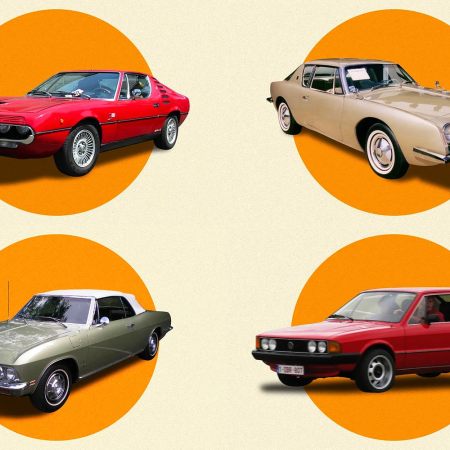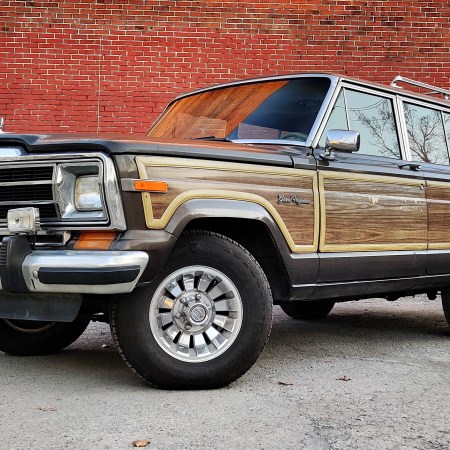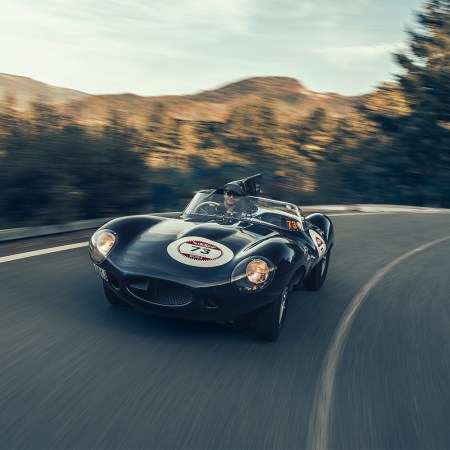The One That Got Away: Cars We’ve Loved and Lost
Twelve automotive writers and photographers on the vehicles they regret letting slip through their fingers
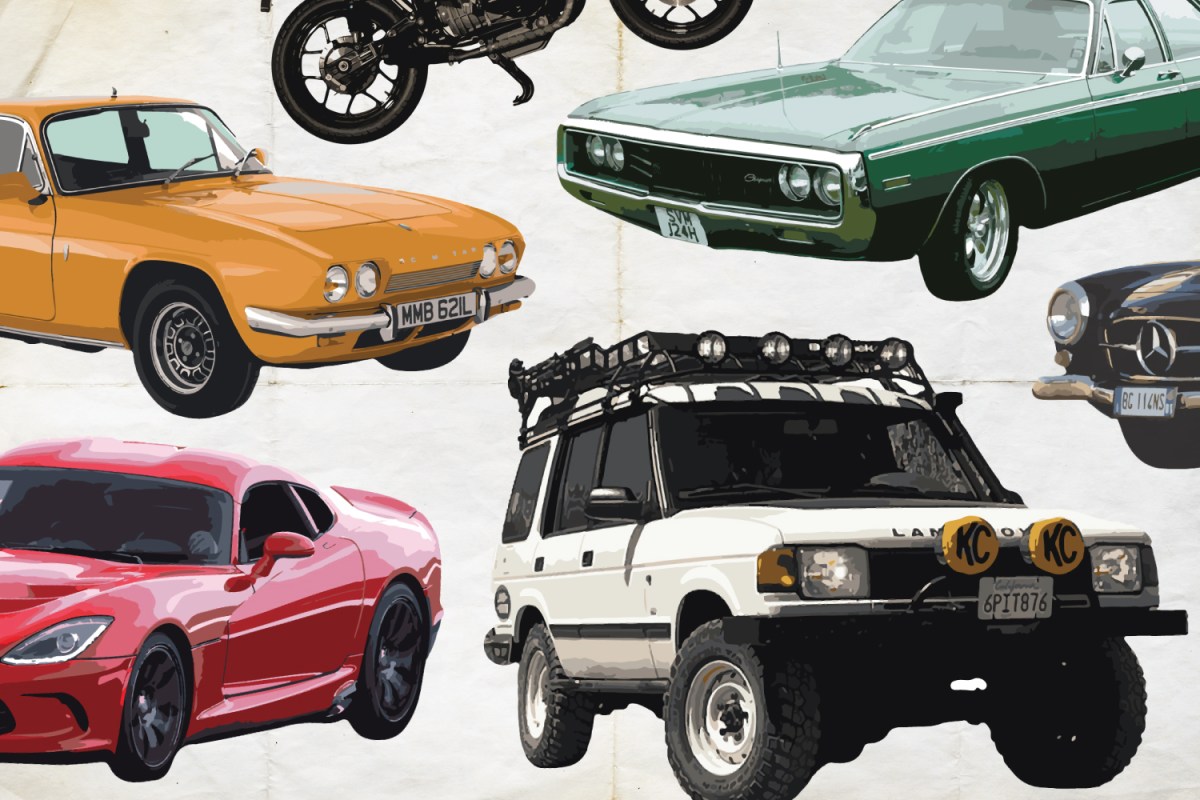
Almost every car enthusiast out there has a tale of woe about “the one that got away.” No, I’m not talking about showing up an hour too late to snag a great deal on a classic, or being outbid in an online auction on a hot hunk of metal — I mean a vehicle from their past that they sold, gave away or otherwise moved on from that, with the benefit of hindsight, fills them with pangs of regret. A hole in their garage, so to speak, that today triggers automotive angst and a desire to go back in time and talk themselves out of whatever transaction cleaved those wheels from their lives.
My own story is relatively humble, but no less poignant for it. In the mid-2000s, I happened upon a single-owner 1991 BMW 525i, a five-speed model with the modern M50 straight-six engine, finished in my favorite color from that brand, Calypso Red. Needing only a little body work, it became my daily driver for the next five years, a period during which I drove it all the way across Canada from Montreal to Vancouver Island, and then down to Seattle and back through the northern United States. Not bad for a vehicle with over 250,000 miles on the odometer.
As time went on, and my driveway got more and more crowded, that BMW was first passed to my partner, and then eventually parked in the woods at the home of my parents. Replaced by modern, quicker and objectively more “fun” cars, I ended up selling the sedan to someone who intended to use the engine in a turbocharged project of their own.
It’s surprising, even to me, how much I miss that simple, comfortable and well-built automobile. It had classic good looks, offered a solid drive and is completely impossible to find in good condition on today’s market without paying an arm and leg for one of the few clean examples still available in the Northeast. Of the three dozen or so cars that have slipped through my fingers over the years, that’s the one whose loss still stings.
I knew I wasn’t the only gearhead out there still haunted by the one that got away, so I reached out to friends and colleagues about their own automotive regrets. The stories they told — and the vehicles at the center of them — are equal parts emotional and unexpected, proving that the cars we love the most are often unpredictable, but always intimately tied to who we are.

1997 Land Rover Discovery
Jessica Lynn Walker
Photographer at MotorTrend, Car and Driver, Road & Track
I have a soft spot in my heart for most of the vehicles I’ve owned. I get attached to these inanimate objects as if they are a pet. I feed and care for them, I wash them regularly to keep a shiny coat, park them far away from others so as to not get any errant dings, and they’ve all had names. They aren’t just a way to get from point A to B for me, they have all become a part of my life, my story, and I mourn each one a little bit when a chapter comes to an end.
I actually cried when I let go of my 1997 Land Rover Discovery, and I’m not ashamed to admit that. His name was Nigel. We only spent four years together, but I fell hard for him. He was a plucky little thing, really nice to look at and charming as hell. I was mostly sad for the life I was supposed to have had with it. I bought it as my daily driver, but I wanted to learn more about off-roading and how to work on my own vehicle. I thought with its reputation, a 20-year-old Land Rover was perfect for both of those endeavors, plus I’ve always loved the Discos.
Long story short, the truck was actually shockingly reliable, and when things did break they ended up being too complicated for me to feel confident in taking them on myself. On top of that, I was so worried about stuff breaking on the trail that I never had the confidence to go anywhere complicated. In a tale as old as time: it’s me, not you, Nigel, and in the end you were way too cool for me. I hope wherever you are now you get to see way more dirt.
1997 Land Rover Discovery:
- 4.0-liter V8 engine
- 182 hp / 233 lb-ft torque
- Four-speed automatic / Five-speed manual gearbox
Fun Fact: Land Rover campaigned the Discovery in the Camel Trophy endurance competition, which in 1997 was held in Mongolia.

1997 Dodge Viper GTS
Doug DeMuro
YouTube car reviewer and founder of Cars & Bids
In 2016, I did a contest with my readers and viewers where they picked the car I would buy next. The winner was a Dodge Viper, so I flew to North Carolina, I bought a blue and white 1997 Dodge Viper GTS, and I drove it home to Philadelphia.
At the time I primarily made content around the cars I owned, so I sold the Viper after I made a few videos with it. Now I regret that a lot. Although I thought the Viper was purely my audience’s pick, I didn’t realize how much I also loved it until I sold it. It cost less to buy than a new Camry (I paid something like $34,500 for it), and it was similarly cheap to own — and it was a truly iconic car; a “poster car” without paying the usual “poster car” tax of deep into the six (or seven!) figures. Viper prices have also gone up considerably since I sold mine, so dumping it was a bad financial decision, too.
These days I’m on to “cooler” and more valuable cars, but even with my increasingly exciting garage, I can appreciate that there was something incredibly pure and simple about the Viper: turn heads for the price of a Camry, blast off wherever you want without worrying about miles and depreciation, and send it to the local shop when something broke, knowing they could fix it easily for maybe a few hundred bucks. It was also a truly iconic car — not “just” a Mustang or a Corvette, but something truly special — that made me smile every single time I saw it. I miss you, Viper!
1997 Dodge Viper GTS:
- 8.0-liter V10 engine
- 450 hp / 490 lb-ft torque
- Six-speed manual gearbox
Fun Fact: The low-volume, one-piece clamshell hood on the second-generation Viper costs between $10,000 and $12,000 to replace. Insurance company pressure saw Dodge replace the clamshell with a more traditional hood on the third-gen model.
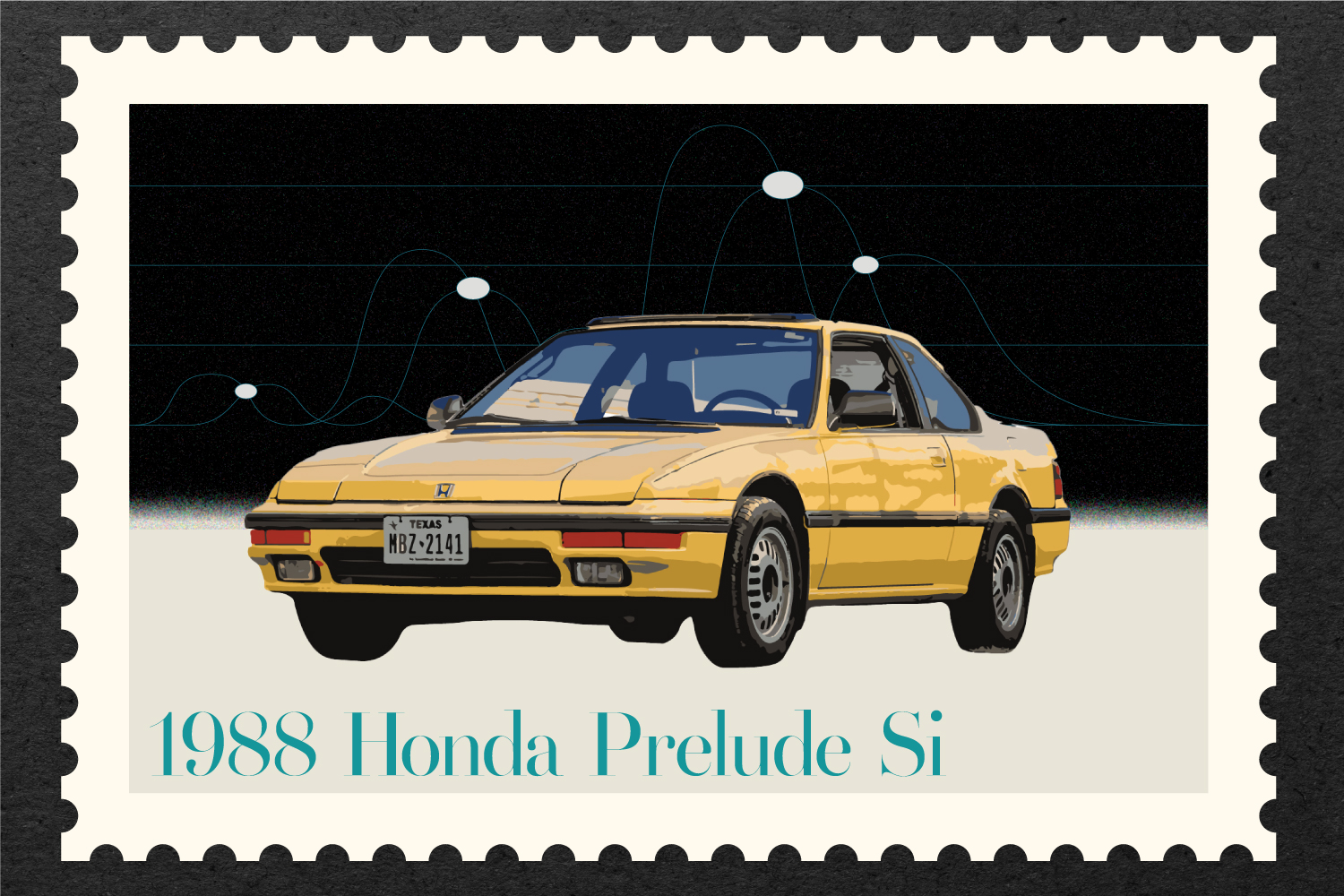
1988 Honda Prelude Si
Victoria Scott
Journalist at Road & Track, Jalopnik, Business Insider, The Autopian, The Drive
I’ve owned some incredible cars I absolutely shouldn’t have sold (usually, a lack of money drives these partings of ways that I know I’ll regret), but one sale stands above all others: my 1988 Honda Prelude Si. My Prelude — finished in “unlucky” Y49 Barbados Yellow — was my daily driver for a few years. I got it for a song back when ‘80s Hondas were still cheap first cars, not collector vehicles.
It was fantastic as a sports coupe: excellent steering, one of the best front-wheel-drive gearboxes of the ‘80s, breathy high-revving four-cylinder, ergonomic interior, comfortable ride. More importantly, unlike most of the other cars I’ve said goodbye to, it never left me stranded once in my time with it. I miss that reliability and fun in one package.
1988 Honda Prelude Si:
- 2.0-liter four-cylinder
- 135 hp / 137 lb-ft torque
- Five-speed manual gearbox
Fun Fact: Honda introduced its four-wheel steering system as an option on the ‘88 Prelude Si.
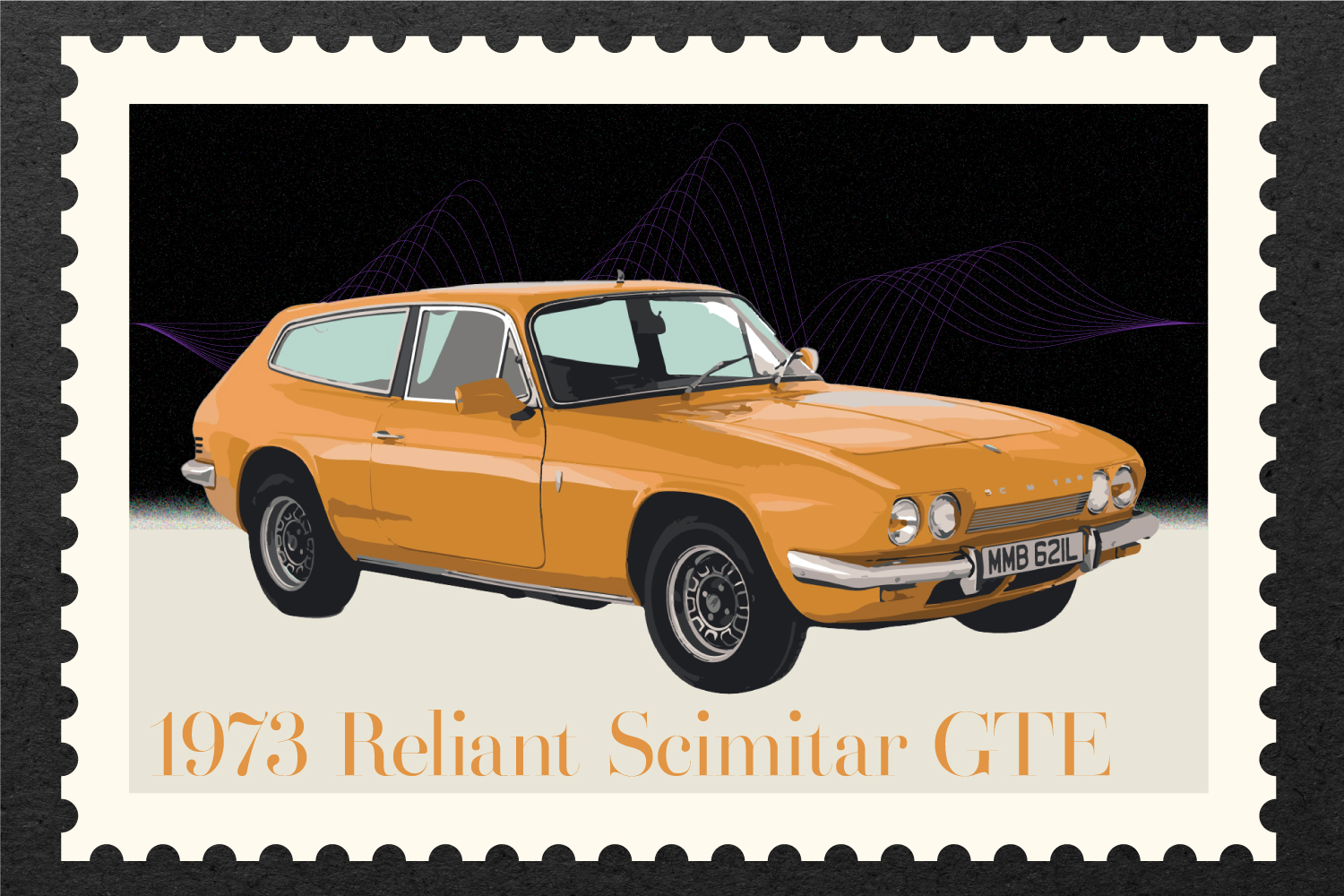
1973 Reliant Scimitar GTE
Jason Torchinsky
Cofounder of The Autopian
The car whose absence actually haunts me is my old 1973 Reliant Scimitar GTE. The car was an incredible, peculiar machine, a fiberglass shooting brake with a torquey V6 and all kinds of fantastic quirks, like a stalk-activated overdrive that worked on 3rd and 4th gears, and what I’m told were the first split folding rear seats crafted by human hands. Oh, and some princess hauled her horse crap in one.
I think what I regret about letting this car go is that it’s a reminder of my own limitations and failings; I had trouble keeping it going, and let it sit far too long, a victim of the cruel hand of procrastination that has me so firmly and comfortably in its grip. I sold the car to my friend Myron Vernis, who has a great collection and I know will take care of it as it deserves, so it’s in good hands now, better hands than mine, but that realization still stings. I miss driving this thing. It was so satisfying and strange and charming.
1973 Reliant Scimitar GTE:
- 3.0-liter V6
- 135 hp / 172 lb-ft torque
- Three-speed automatic / Four-speed manual gearbox
Fun Fact: The princess Jason is referring to is Princess Anne, who has reinforced her Britishness by owning as many as eight Reliants.
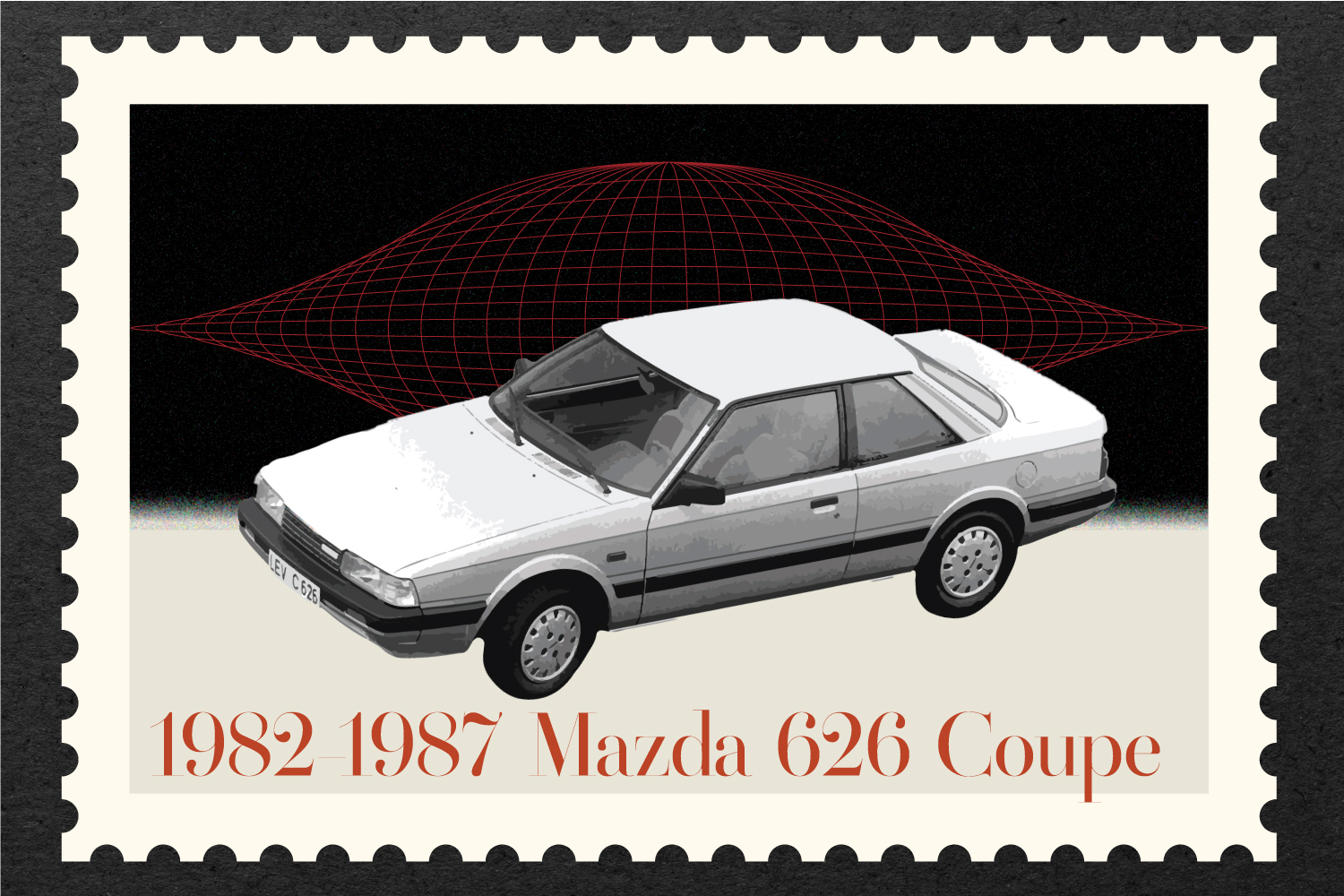
1982-1987 Mazda 626 Coupe
Lyn Woodward
Journalist at MotorTrend, Hagerty, Autotrader, Jalopnik, Kelley Blue Book
I had a late-‘80s Mazda 626 coupe that was fabulous. It was the first car I had that I ever truly loved after a string of hand-me-downs and crappy cars that had been gifted to me over the years that broke down on a regular basis. The Mazda was nothing like that. I adored the spec of it: white over blue, five-speed, sporty looks, everything that you would want in a car. It made me feel like I’d finally “arrived,” but by the time we parted ways it was getting so old and the engine needed some massive repairs that I just couldn’t afford. Once it started shaking every time I crested 50 mph on the highway, I knew I had to make a decision.
I was in my mid-30s and living in San Francisco. At that point in my life I’d only ever driven manual transmissions, but dealing with all of the hills I kept thinking, “I want an automatic!” I needed a reliable vehicle to drive every day, and so I traded it in. I was excited to at least get something for the Mazda from the dealership, but I quickly realized they’d gotten a better deal than I did. I wish I had had the wherewithal and the cash to fix it instead of ditching it.
1982-1987 Mazda 626 Coupe:
- 2.0-liter four-cylinder
- 93 hp / 115 lb-ft torque
- Five-speed manual gearbox
Fun Fact: MotorTrend named the 626 the Import Car of the Year in 1983.
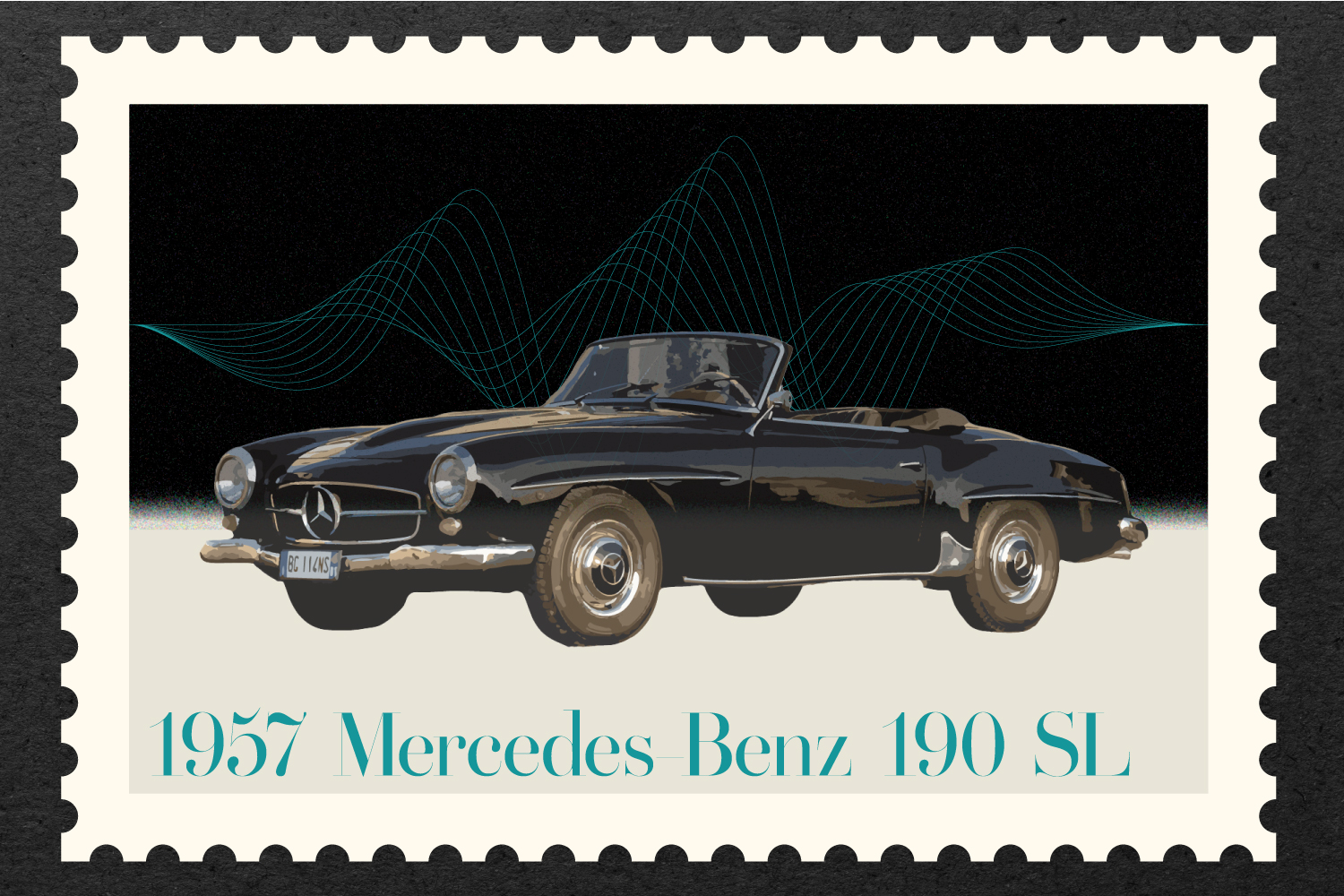
1957 Mercedes-Benz 190 SL
Jim Motavalli
Journalist at The New York Times, Autoweek, Barron’s Penta
There’s no contest. I bought a 1957 Mercedes-Benz 190 SL in the mid-‘80s. It was a British example, right-hand drive. I paid $3,500, but even then a 190 SL for $3,500 was pretty cheap. From 20 feet it looked fully restored: it had a repaint, redone chrome, a new top, new upholstery, I think even the glass had been replaced.
The owner had imported it themselves, but the problem was, the car had been “restored” in England. The British have a phrase called “bodged,” and it completely applied to this car. It was a real 20-footer. Under the new paint was a ton of Bondo — I couldn’t get a magnet to stick to it — and even though it had a brand new top, it leaked like a sieve. On top of that, it didn’t drive well. Those things had twin Solex carbs, and mine desperately needed a rebuild, but after spending pretty much all the money I had in the world on the car, I couldn’t pay for any mechanical work. It ran but it wouldn’t idle below about 1,300 rpm.
I just never warmed up to it. I kept it about a year, then I decided I wasn’t driving it because it wasn’t really any fun, as it was more of a grand tourer than a sports car. I sold it for $4,500, and I thought I’d made a major score. In hindsight, those cars are now worth $200,000.
1957 Mercedes-Benz 190 SL:
- 1.9-liter four-cylinder
- 104 hp / 105 lb-ft torque
- Four-speed manual gearbox
Fun Fact: The 190 SL was the more affordable companion to the gullwing 300 SL that kicked off the long-running Mercedes-Benz model.
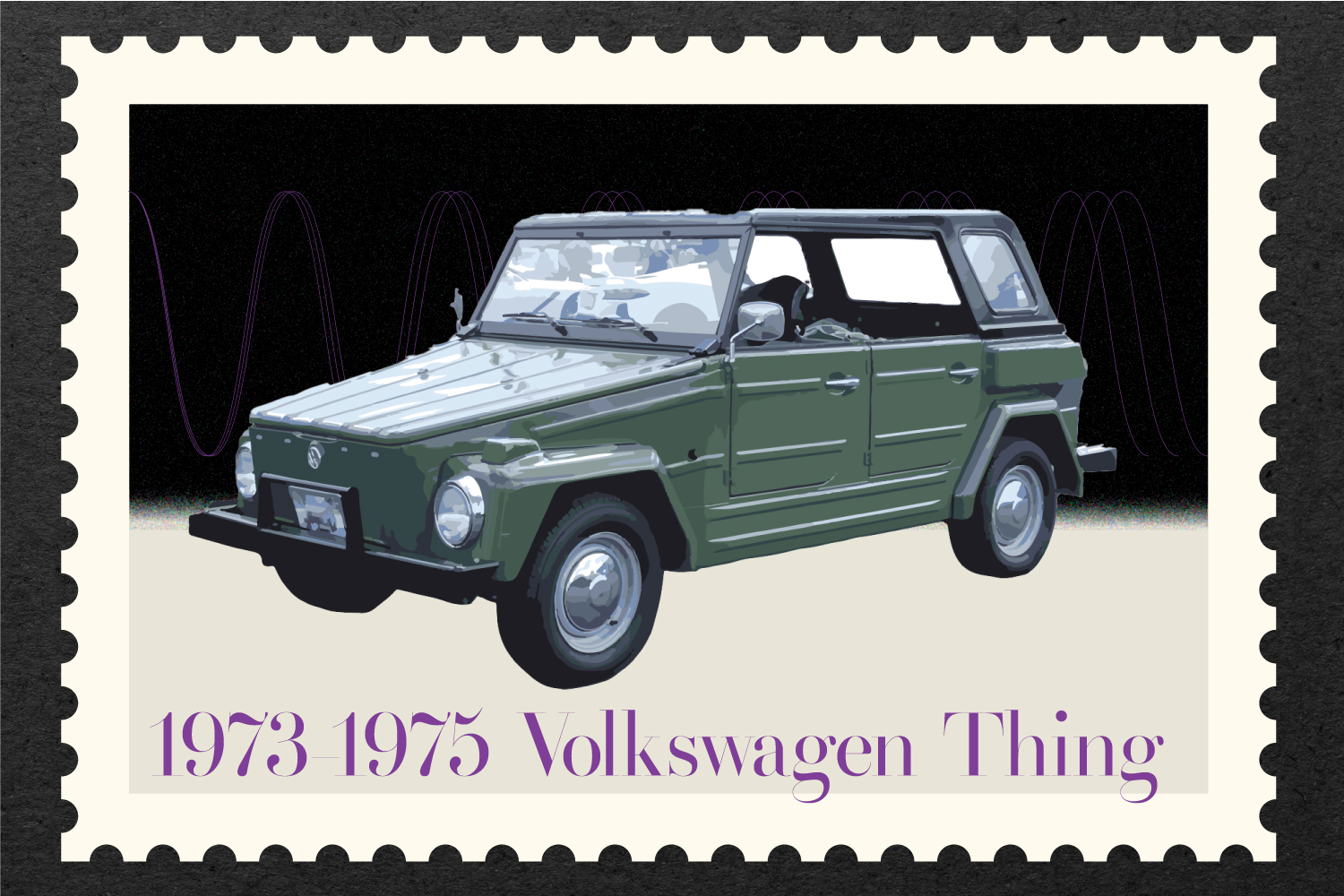
1973-1975 Volkswagen Thing
Emme Hall
Journalist at Edmunds, Motor1, TechCrunch
I had always loved the Volkswagen Thing, because it was like a Jeep but cooler. I grew up around air-cooled VWs (which my dad raced), and I learned how to drive on an air-cooled Volkswagen dune buggy, so what other car am I going to get? I finally picked one up in college, and I drove it everywhere and loved it.
It broke all the time. At one point, I forgot to latch the hood after filling it with oil, and it flew up during a road trip and took out the windshield, leaving me essentially driving a big yellow bucket around town with no windshield frame, roll bar or roof. The next day, a big rock kicked up and hit me in the head while I was behind the wheel, which meant I started wearing a helmet while I drove it around, too.
Now that I know so much more about fixing cars, I realize I could have done a lot of the repair work myself, but back then it was too daunting. There wasn’t YouTube to help me figure anything out, and I only knew one place to order parts: the Trim Shop, which was located in Arizona. I remember it was such a big deal if I could get even simple stuff like new plastic side windows for my Thing.
I sold it when I went into the Peace Corps because I thought I would be gone for two years, and of course I came back six months later. I don’t have a lot of regrets in life: the only two are not going on a trip to the Amazon with a friend, and selling my VW Thing. Every time I see one, I regret it, especially when friends send me pics of Things they encounter on the street. I’ve always told myself that one day, when I win the lottery, I’ll head straight to the Porsche dealership — but is that really true? Am I going to go to the Porsche dealership, or am I going to go to The Samba? Because I’m probably going to go to The Samba.
1973-1975 Volkswagen Thing:
- 1.6-liter four-cylinder
- 46 hp / 71 lb-ft torque
- Four-speed manual gearbox
Fun Fact: The Thing was the first Mexican-manufactured vehicle to be sold in the United States.
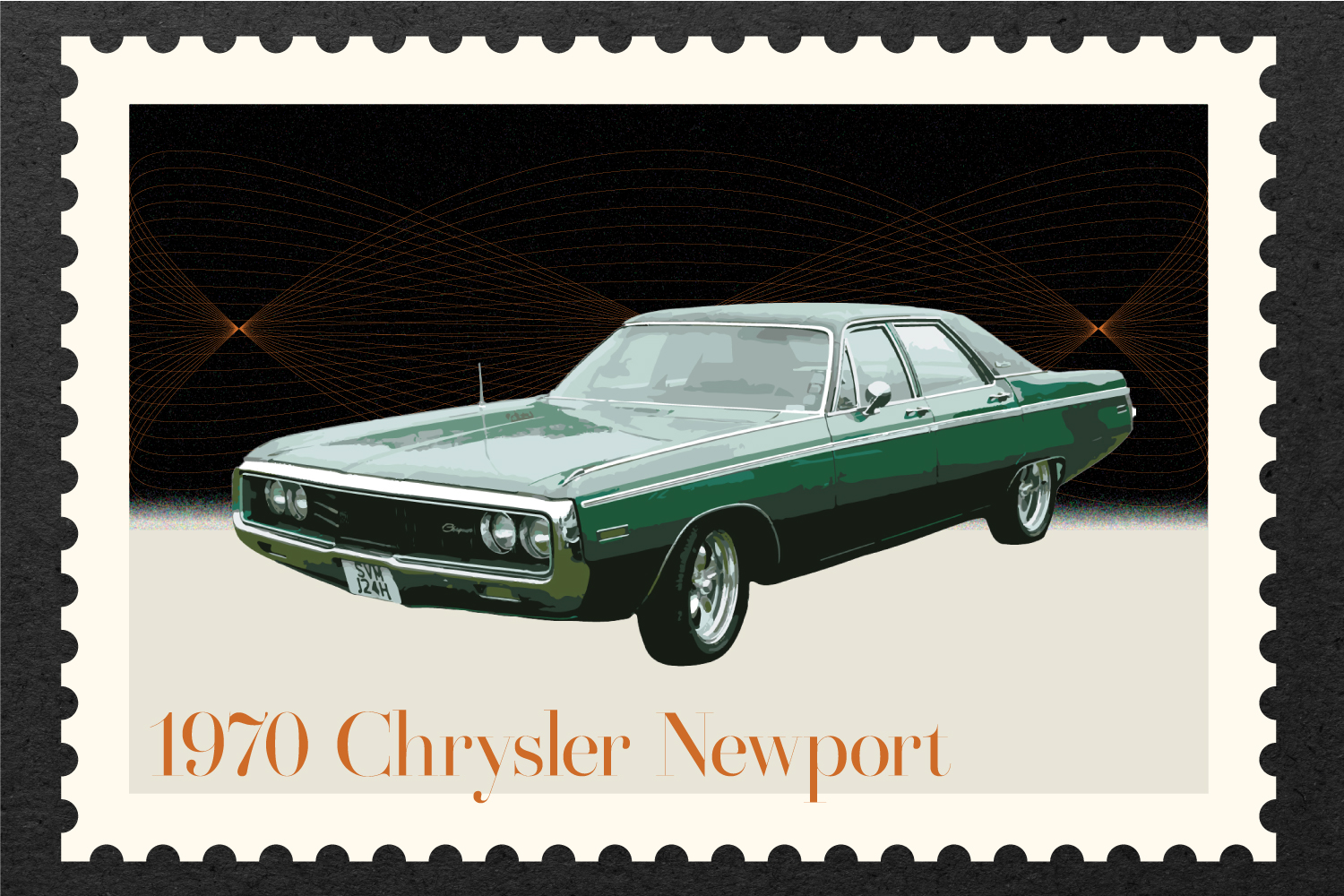
1970 Chrysler Newport
Mike Musto
Director, New Media at Hemmings
Most of the cars that I bought and sold, it was time for them to come in and out of my life. That being said, I’m a big Chrysler C-body fan, and the one that I really should never have let go of was a 1970 Chrysler Newport Custom that I had around 2014 or 2015. They are a soft spot for me, a tremendous cruiser, one of the biggest two-door coupes ever produced, fast enough, comfortable — and the epitome of an old-man car.
I’d been looking for one for a while and found it in Rancho Cucamonga. It was white with a teal interior, AC, power seats, a 383 V8, and it was in phenomenal shape. While it wasn’t a perfect car by any means, everything worked, and it was a nice, unmolested example. The older you get, and the more you look for these things, you realize how rare that actually is. These models are underappreciated, so it’s hard to find one in good shape.
I sold it to buy one of the worst cars I ever had: a 1981 Turbo Trans Am, a Bandit car, that was a proper shitbox. If I could buy any car back that I used to own, it would be the Newport. I would buy it again tomorrow. I would probably pay double.
1970 Chrysler Newport:
- 383-cubic-inch V8
- 290 to 330 hp / 380 to 425 lb-ft torque
- Three-speed automatic gearbox
Fun Fact: The C-body of this period adopted “fuselage” styling, so named because of its resemblance to jet aircraft of the era.

1989 Volvo 245
Abigail Bassett
Journalist at TrueCar, TechCrunch, Autoblog, The Verge
It was a blue 1989 Volvo 245. I learned to drive in it — my dad took me to the high school parking lot in Connecticut on the weekends and taught me to do donuts with it (and how to not crash when you hit ice). I used to shepherd my sister to and from school, swim practice and everything else in it. I got my first speeding ticket, doing 100 mph on the Merritt Parkway, and it was because I was late for curfew (oops). I had my very first fender bender in it. We lived in a really rural town in CT, and you couldn’t safely walk anywhere (you had to drive or be driven) so having a car was huge. Everyone in my town got new Jeep Cherokees, but I drove the Volvo and never thought twice about it. My old Volvo was everything to me then.
I took it to college in California with me, where one old roommate used to get nervous at stoplights/signs and yell out “GO GO GADGET VOLVO” when I’d hit the gas. I actually got a red-light camera ticket in L.A. in it in college that my dad still says he wishes he framed because I’m clearly swearing in the photo. I also used to drive it from L.A. to Northern California to visit him when he was working up there. He eventually made me sell it because he thought it was too old. I ended up inheriting my grandfather’s Buick after that (and I hated that car). I missed the Volvo so much that I bought two blue ‘89s off Craigslist around 2015. I’m down to only one now (we had to sell the other because when we moved in 2020, we had no parking space), and I still love it. You’d have thought I lost a pet the day we sold it. I bawled watching it get towed away.
1989 Volvo 245:
- 2.3-liter four-cylinder
- 111 hp / 136 lb-ft torque
- Four-speed automatic / Five-speed manual gearbox
Fun Fact: The Volvo 245 was nicknamed “the brick” due to its Lego-like rectilinear styling.
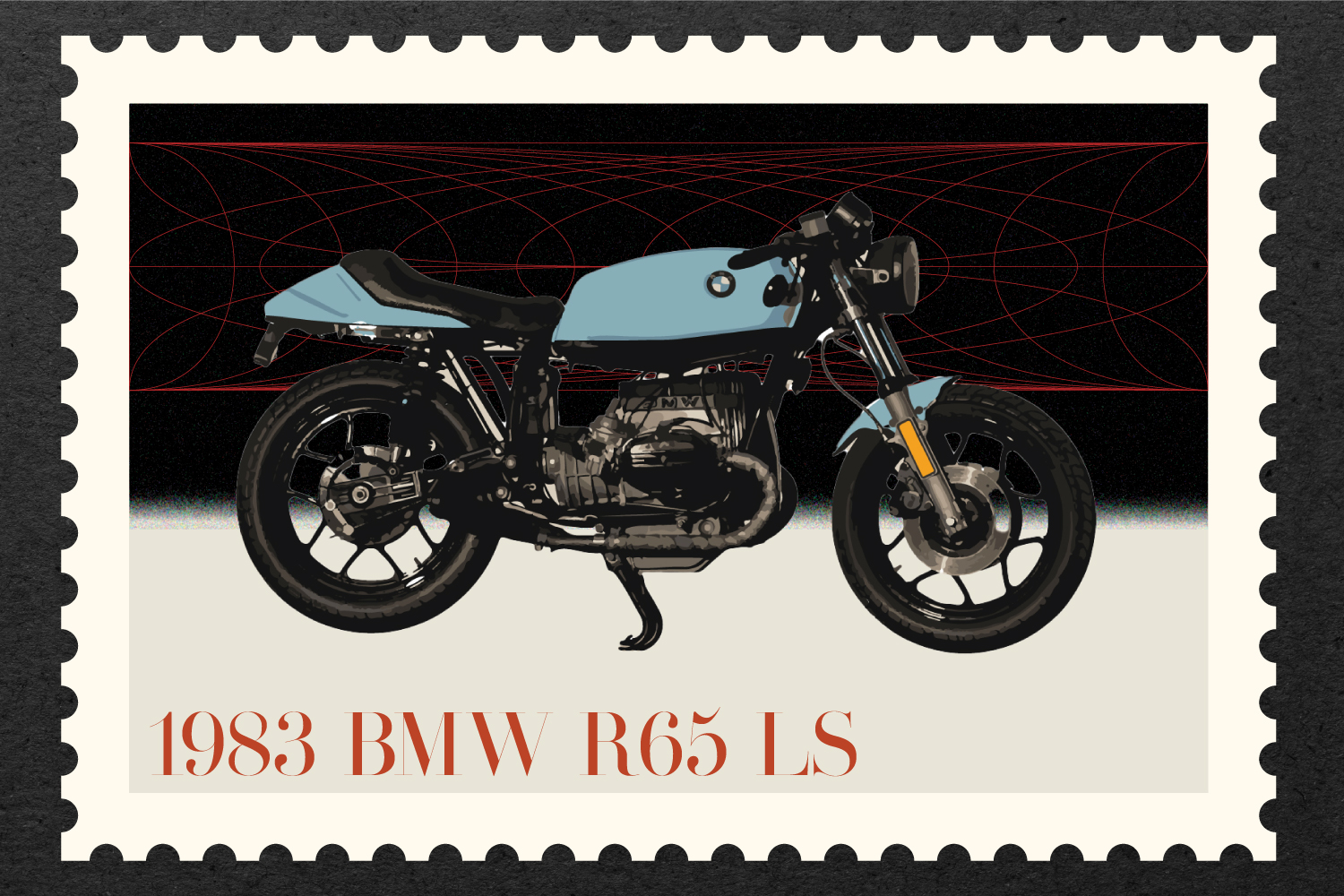
1983 BMW R65 LS
Basem Wasef
Journalist at InsideHook and Robb Report, author of “Speed Read: Supercar,” “Legendary Race Cars” and “Legendary Motorcycles”
Like many a petrolhead during the pandemic, I spent more time fantasy shopping for dream vehicles than I care to admit. While auction sites like BaT were pawning cars and bikes at a premium, I stumbled upon an unexpected gem on the neighborhood site Nextdoor: a 1983 BMW R65 LS, lovingly modified into café racer form. The homegrown custom wasn’t a high-end build — no fancy Motogadget cluster or slick Rizoma accessories in sight. But its incongruous Gulf livery, wonky proportions and mellow amber headlight made it high on charm. I figured this would be a fun flip, something to ride a bit and then turn over when I tired of it. Plus, it made cute garage bedfellows with my similarly round-headlighted 1963 Land Rover.
After a few months of sporadic riding I thought about putting the old girl on a motorcycle auction site, but the site’s owner took a liking to it and made me a fair offer before I could list it. I figured it was time to move on, though seeing the Beemer go proved tougher than anticipated. On top of that, reacquiring the bike became a non-starter, as the buyer, who was also smitten by it, sold it a year later to a collector in Mexico City in order to fund a business project.
I still think about the old BMW and the soulful beat of its boxer engine, but I’m also aware of its imperfections, which paradoxically endears it to me more. The bike-sized hole in my heart will soon be filled with another classic, this time a gorgeous 20-year-old limited-edition Ducati. Here’s to the long view, and holding on to the ones we love.
1983 BMW R65 LS:
- 649 cc two-cylinder
- 50 hp / 38 lb-ft torque
- Five-speed manual gearbox
Fun Fact: Café racer bikes are modified from their original spec to be quicker and reflect competition-like styling, typically by stripping them down for tighter handling and a more race-oriented riding position.

2015 Dodge Viper GT
Elana Scherr
Journalist at Car and Driver and co-author of “Don ‘The Snake’ Prudhomme: My Life Beyond the 1320”
People talk a lot about wishing they’d never sold their first car, or some cool car they had in their youth. I didn’t have any cars in my actual youth, not getting a driver’s license or a car until the end of college. I did love that car, a 1973 Plymouth Duster, and the one that followed, a bruised-up ‘72 Challenger, but they went to good homes and I never pine for them. I’ve sold some trucks and some projects since then, but mostly I just keep everything, so I regret nothing.
What I do regret is missing out on a chance to buy a 2015 Dodge Viper GT that the company I worked for had used for a video project. They had blown up the engine and replaced it, and the tires were bald, and even then it would have probably taken my entire year’s salary, but I loved that car madly, and when I look at where Viper prices have gone, it seems unlikely I’ll ever get another chance at one. So time-machine me would zip back and make an offer, and current me would be daily driving that snake.
2015 Dodge Viper GT:
- 8.4-liter V10
- 645 hp / 600 lb-ft torque
- Six-speed manual gearbox
Fun Fact: The final-generation Viper returned to the clamshell hood after abandoning it between 2003 and 2010, this time forging it out of hand-laid carbon fiber.
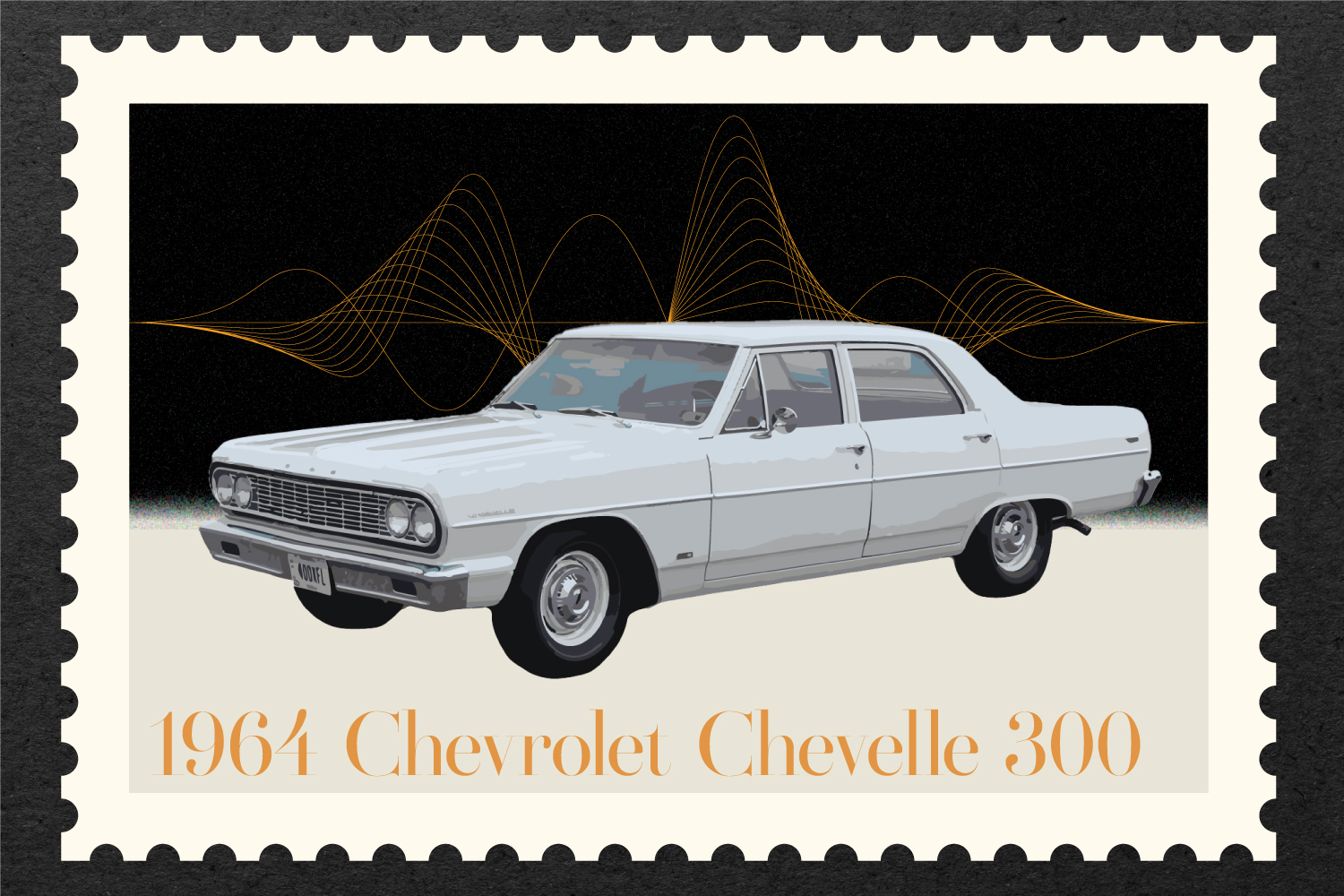
1964 Chevrolet Chevelle 300
John Voelcker
Journalist at Car and Driver, Green Car Reports, The Drive, InsideEVs
The most logical “one that got away” would be my 1964 Pontiac GTO convertible, a rust-free California car I bought in college and kept for 10 years — half of them garaged in another state. When I realized I couldn’t afford the full, frame-off restoration it deserved, I sold it for the cash to make a down payment on a New York City apartment. It was a fair trade; I never looked back.
Instead, the one that got away was a different first-year GM A-body. My San Francisco friends Rick and Carolyn had a white 1964 Chevrolet Chevelle 300 four-door in the early 1980s, and happily drove the 20-year-old car anywhere. It became our daily runner when the three of us spent the summer of 1984 in a borrowed house in Venice Beach, California.
Their 300 was the base Chevelle, the bottom of the range below the more glamorous Malibu and Malibu SS. It sat six people comfortably on two bench seats, and had drum brakes all round. It was an easy driver despite the lack of power steering, though it had a lot of turns lock to lock and heeled over on corners. Its straight-six and two-speed Powerglide automatic were adequate.
I liked the slab-sided looks and flat grille of “our” ’64 Chevelle, and it was reliable, unpretentious transport until Rick found a ’65 Malibu coupe, which he bought and repainted in “Teen Angel” blue metal flake. I bought the 300, but soon I got a job offer in NYC for the fall. I sold it to my friend John, who kept it 10 more years — and relished being a Silicon Valley lawyer with “that car.”
Driving it to work in Oakland, John once saw steam from under the hood; his top radiator hose had let go. He pulled into a parts store, bought a new one, took off his suit jacket, rolled up his sleeves, changed it on the spot and continued on to his meeting. It was just that kind of car. In a moment of weakness, he let his wife donate it to charity. We’ve both missed it ever since.
1964 Chevrolet Chevelle 300:
- 194-cubic-inch inline six-cylinder
- 120 hp / 177 lb-ft torque
- Two-speed automatic gearbox
Fun Fact: The mid-‘60s Chevelle played a starring role in the cult film Repo Man, which mixed aliens, punk rock and Los Angeles in a surreal blender.
Thanks for reading InsideHook.
Sign up for our daily newsletter to get more stories just like this.
